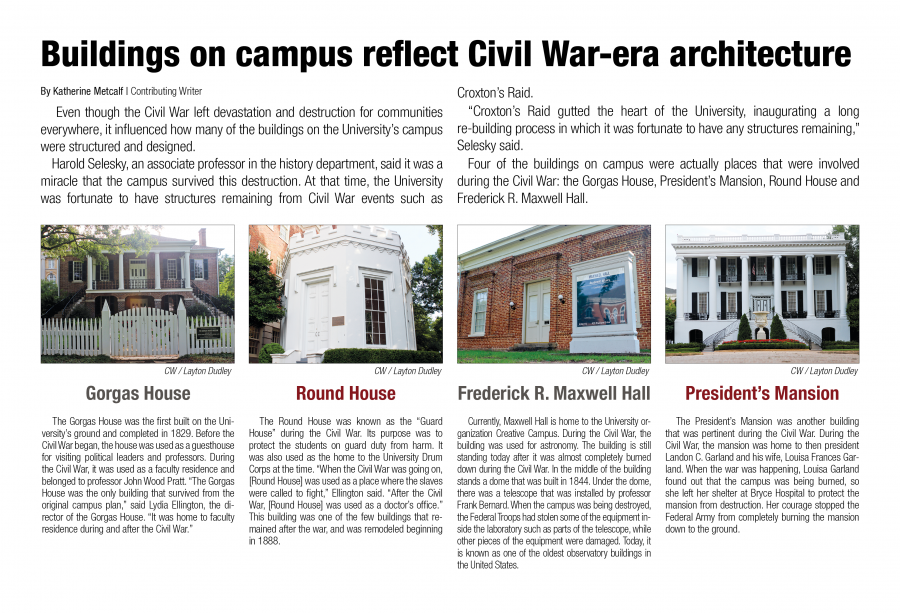Even though the Civil War left devastation and destruction for communities everywhere, it influenced how many of the buildings on the University’s campus were structured and designed.
Harold Selesky, an associate professor in the history department, said that it was a miracle that the campus survived this destruction. At that time, the University was fortunate to have structures remaining from Civil War events such as Croxton’s raid.
“Croxton’s raid gutted the heart of the University, inaugurating a long re-building process in which it was fortunate to have any structures remaining,” Selesky said.
Four of the buildings on campus were actually places that were involved during the Civil War: the Gorgas House, President’s Mansion, Round House, and Frederick R. Maxwell Hall. For more information, visit tour.ua.edu/tourstops.
Gorgas House
The Gorgas House was the first built on the University’s ground and completed in 1829. Before the Civil War began, the house was used as a guesthouse for visiting political leaders and professors. During the Civil War, it was used as a faculty residence and belonged to professor John Wood Pratt. “The Gorgas House was the only building that survived from the original campus plan,” said Lydia Ellington, the director of the Gorgas House. “It was home to faculty residence during and after the Civil War.”
President’s Mansion
The President’s Mansion was another building that was pertinent during the Civil War. During the Civil War, the mansion was home to then president Landon C. Garland and his wife, Louisa Frances Garland. When the war was happening, Louisa Garland found out that the campus was being burned, so she left her shelter at Bryce Hospital to protect the mansion from destruction. Her courage stopped the Federal Army from completely burning the mansion down to the ground.
Round House
The Round House was known as the Guard House during the Civil War. Its purpose was to protect the students on guard duty from harm. It was also used as the home to the University Drum Corps at the time. “When the Civil War was going on, [Round House] was used as a place where the slaves were called to fight,” Ellington said. “After the Civil War, [Round House] was used as a doctor’s office.” This building was one of the few buildings that remained after the war, and was remodeled beginning in 1888.
Frederick R. Maxwell Hall
Currently, Maxwell Hall is home to the University organization Creative Campus. During the Civil War, the building was used for astronomy. The building is still standing today after it was almost completely burned down during the Civil War. In the middle of the building stands a dome that was built in 1844. Under the dome, there was a telescope that was installed by professor Frank Bernard. When the campus was being destroyed, the Federal Troops had stolen some of the equipment inside the laboratory such as parts of the telescope, while other pieces of the equipment were damaged. Today, it is known as one of the oldest observatory buildings in the United States.









